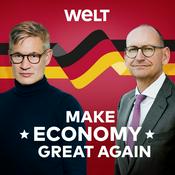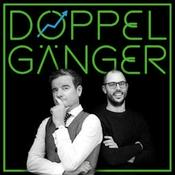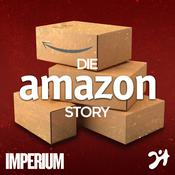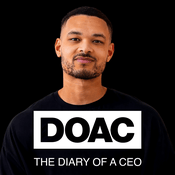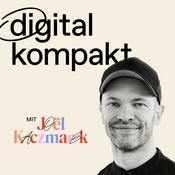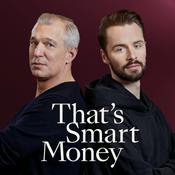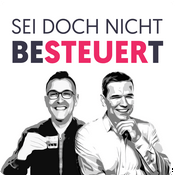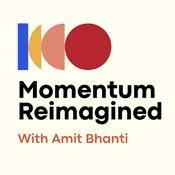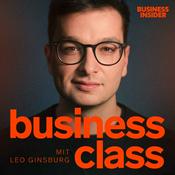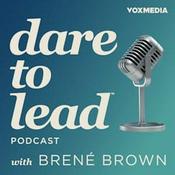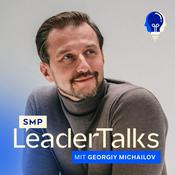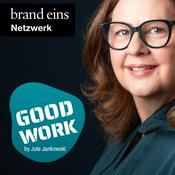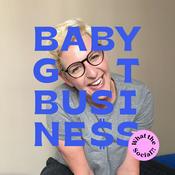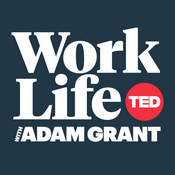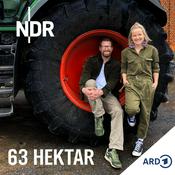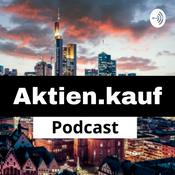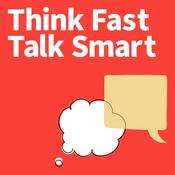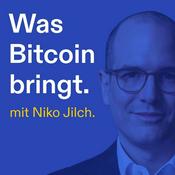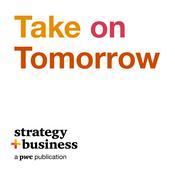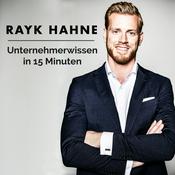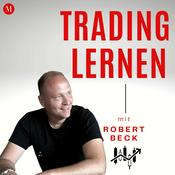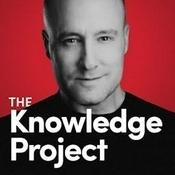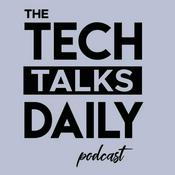22 Episoden

How RingCentral Uses AI to Improve Conversations Without Losing the Human Touch
15.12.2025 | 31 Min.
As AI moves beyond hype and into everyday operations, many organizations are asking harder questions about impact, trust, and return on investment. Three years on from ChatGPT’s breakout moment, leaders are no longer experimenting for novelty’s sake. They want to know where AI genuinely improves outcomes for employees and customers, and where it risks getting in the way.In this episode of the AI at Work Podcast, I sit down with John Finch, Head of Product Marketing at RingCentral, to unpack how AI is changing customer interactions before, during, and after the call. We explore how tools like AI receptionists and real time agent assistance are helping businesses avoid missed calls, reduce friction, and support frontline teams without turning conversations into scripted or robotic exchanges.John shares RingCentral’s perspective on why voice remains one of the richest and most strategic data sources inside modern organizations. We discuss how insights drawn from real conversations are shaping smarter routing, coaching, and workforce planning, and why sectors like healthcare and financial services are leaning into AI faster than others. At the same time, we address the common mistakes companies make when they bolt AI onto fragmented systems rather than embedding it into a unified platform.Looking ahead to 2026, this conversation also reflects on what AI done well really looks like in the workplace. Not as a replacement for people, but as a way to remove pressure, improve performance, and create better experiences for everyone involved. As AI becomes more natural, conversational, and embedded into daily workflows, the line between digital and human support continues to blur.So as AI becomes part of the fabric of customer operations, how are you balancing automation with empathy, and what lessons from your own organization would you share with others navigating this shift?

How SMBs Can Stay Visible in an AI Driven Holiday Season
24.11.2025 | 32 Min.
What happens when holiday shopping habits shift faster than most small businesses can keep up, and AI becomes the first stop for gift ideas, local searches, and product discovery? In my conversation with Alicia Pringle, Senior Director of Online Marketing at Network Solutions, we look at how the rise of AI-assisted search is changing the game for small business visibility during the busiest season of the year. Alicia brings two decades of marketing experience and a front row seat to the rapid evolution of search, and she breaks down what is really happening behind the scenes as shoppers move from typing into Google to asking Gemini, ChatGPT, and other assistants for personal recommendations.Alicia explains how early holiday behaviour has become and why the traditional mid-December surge is now simply a final sweep rather than the main event. She talks through the surge in AI driven discovery and how more than a third of shoppers now ask AI for curated suggestions with specific personal details baked in. This has created a rare moment where small businesses can compete with large retailers again because AI search rewards clarity, genuine content, and trustworthy online signals rather than the size of a marketing budget. Her examples make it clear that websites, local listings, and social channels now act as one connected reputation system, and AI will only surface businesses that look consistent, human, and helpful across all of them.Throughout our conversation, Alicia brings the ideas to life with practical stories. She shares how a retreat centre in Arizona used smarter positioning, thoughtful content, and simple updates to pull in hundreds of organic clicks right as shoppers were searching for meaningful holiday gifts. She explains how small changes to website speed, photos, clarity, and mobile performance can lift a business in both traditional search and AI powered assistants, often in a matter of hours rather than months. And she makes a strong case for curiosity as the new essential skill, because leaders do not need to understand the mechanics of AI to benefit from it, they simply need to be willing to experiment.As AI search becomes part of everyday life, Alicia’s message is grounding. Visibility can be earned again. Small businesses can adapt. Modern tools can remove a lot of the technical pain. And with a few thoughtful changes, brands can still show up in those key digital moments when customers are ready to buy. So how should small businesses use this moment to build trust, stay discoverable, and meet shoppers where they already are? I would love to hear your thoughts.

What Designed AGI Means for Business Leaders
20.11.2025 | 44 Min.
What happens when a field races forward faster than society can understand it, let alone shape it? And how do we balance the promise of superintelligence with the responsibility to ensure it reflects the values of the people it will eventually serve? In this episode of AI at Work, I sit down with Dr Craig Kaplan, founder and CEO of iQ Company and SuperIntelligence. He's also a pioneer who has been building intelligent systems since the 1980s, and one of the few voices urging a deliberate, safer path toward AGI. Craig brings decades of perspective to a debate often dominated by short-term thinking, sharing why speed without design can become a trap and why the next breakthroughs must be grounded in intention rather than chance.Throughout our conversation, Craig explains why current alignment methods often rely on narrow viewpoints, which creates both ethical and technical blind spots. He shares his belief that the values guiding future intelligence should come from millions of people across cultures rather than a handful of researchers writing a constitution behind closed doors. Drawing on his work at Predict Wall Street, he illustrates how collective intelligence can outperform experts, why diverse viewpoints matter, and how these lessons shape the architecture he believes is needed for safe AGI and the superintelligent systems that follow. His clarity on the difference between tools and entities, and how quickly AI is shifting into the latter category, offers a grounding moment for anyone trying to navigate what comes next.This episode moves beyond fear and hype. Craig talks openly about risk, but he also brings optimism about the potential for systems that are safer, faster to build, less costly, and more reflective of humanity. For leaders wondering how to prepare their organisations, he shares what signals to watch, why transparency and design matter, and how a more democratic approach to intelligence could shift the odds of a better outcome. If you want a clear, thoughtful look at the road ahead for AGI, superintelligence, and the role humans still play in shaping both, you will find a lot to chew on here.Listeners wanting to learn more can explore superintelligence.com, where Craig and the iQ Company team share research, videos, papers, and ways to get involved. What part of this conversation sparks your own questions about the future we are building together?Sponsored by NordLayer:Get the exclusive Black Friday offer: 28% off NordLayer yearly plans with the coupon code: techdaily-28. Valid until December 10th, 2025. Try it risk-free with a 14-day money-back guarantee.

The HR Revolution You Haven’t Heard About Yet: AI That Empowers People
07.11.2025 | 41 Min.
I sit down with Toby Hough, Vice President of People and Culture at HiBob, for a grounded and human conversation about how AI is reshaping the world of work, not by replacing people but by amplifying them. As an HR leader inside a company that builds HR technology, Toby brings a rare perspective on what it really means to balance efficiency with empathy in an AI-driven workplace.We talk about the fear that still surrounds AI in many organisations and how leaders can help shift that mindset from anxiety to opportunity. Toby explains why HiBob is taking a “more with more” approach, using AI tools to empower employees rather than reduce headcount. From custom-built AI coaches that guide managers through feedback conversations to an internal platform with dozens of homegrown AI tools, he shares how democratising AI access can transform both productivity and trust.Toby also explores how leaders can measure success in this new era, moving beyond cost savings to focus on adoption, engagement, and well-being. He highlights the delicate balance between automation and human connection, showing how HiBob invests equally in AI enablement and in-person leadership development. As we look ahead, Toby reflects on the evolving skills required to lead both humans and AI agents, and how the next generation of leaders will need to master curiosity, adaptability, and collaboration across both worlds.Listen in for an honest discussion about the cultural, emotional, and practical realities of integrating AI at work, and why, Toby’s LinkedIn HiBob websiteIn Good Company websiteSponsored by NordLayer:Get the exclusive Black Friday offer: 28% off NordLayer yearly plans with the coupon code: techdaily-28. Valid until December 10th, 2025. Try it risk-free with a 14-day money-back guarantee.

The Future of Work: HGS on Adaptability, AI, and Human Advantage
05.11.2025 | 36 Min.
The arrival of generative AI has sparked an uncomfortable question for many young professionals: What happens to entry-level jobs when machines can now write, analyze, and even converse as well as humans? In this episode of the AI at Work Podcast, I reconnect with Anshuman Singh, CEO of HGS UK, to discuss how automation and artificial intelligence are reshaping the early stages of a career, and what skills will define employability in the years ahead.Anshuman brings a rare blend of optimism and realism to the debate. He traces how AI’s evolution from statistical tools to generative systems has amplified both opportunities and anxieties, particularly among graduates seeking their first big break. Drawing on research from MIT, ADP, and the World Economic Forum, he explains how AI is accelerating job displacement in certain functions, such as data entry and basic customer service, even as it creates entirely new roles in areas like AI training, ethics, and human-in-the-loop supervision.We explore why adaptability, not fear, is the true competitive advantage in this era of rapid change. Anshuman breaks down three categories of emerging roles: AI specialist positions such as prompt engineers, collaborative roles that blend human creativity with machine intelligence, and augmented roles where humans use AI to enhance judgment and performance. He also warns that if companies automate entry-level work too quickly, they risk losing the apprenticeships and on-the-job learning that build leadership pipelines.Our conversation turns to the human qualities that machines still cannot replicate, such as empathy, ethical reasoning, creative problem solving, and contextual understanding, and why these traits will define long-term success. Anshuman offers practical advice for workers and business leaders alike: redesign roles to keep humans in the loop, measure success by both human impact and automation, and invest relentlessly in learning cultures that help people evolve alongside technology.If you are worried about AI replacing your job, this episode reframes the story. It is not about competing with machines; it is about understanding what only humans can do and leveraging that as your edge.AI at Work is Sponsored by NordLayer:Get the exclusive Black Friday offer: 28% off NordLayer yearly plans with the coupon code: techdaily-28. Valid until December 10th, 2025. Try it risk-free with a 14-day money-back guarantee.
Weitere Wirtschaft Podcasts
Trending Wirtschaft Podcasts
Über AI at Work
Höre AI at Work, Make Economy Great Again und viele andere Podcasts aus aller Welt mit der radio.de-App
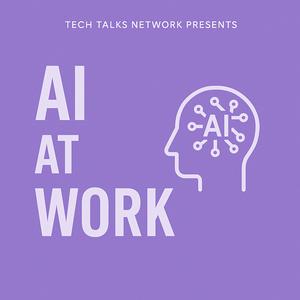
Hol dir die kostenlose radio.de App
- Sender und Podcasts favorisieren
- Streamen via Wifi oder Bluetooth
- Unterstützt Carplay & Android Auto
- viele weitere App Funktionen
Hol dir die kostenlose radio.de App
- Sender und Podcasts favorisieren
- Streamen via Wifi oder Bluetooth
- Unterstützt Carplay & Android Auto
- viele weitere App Funktionen


AI at Work
App laden,
loshören.
